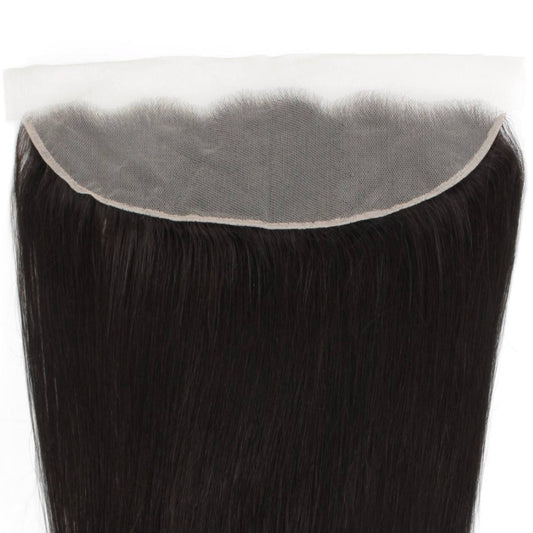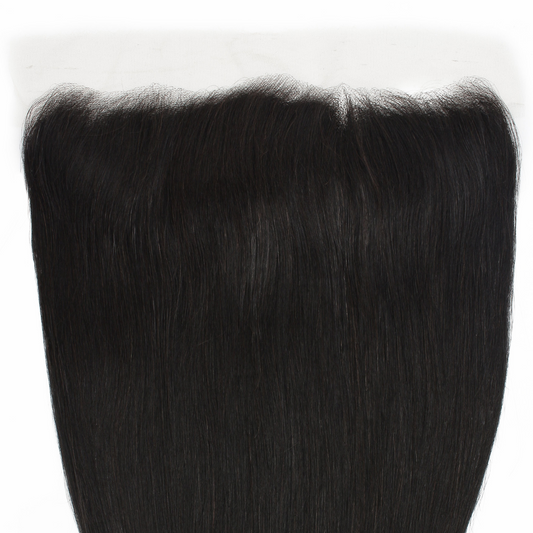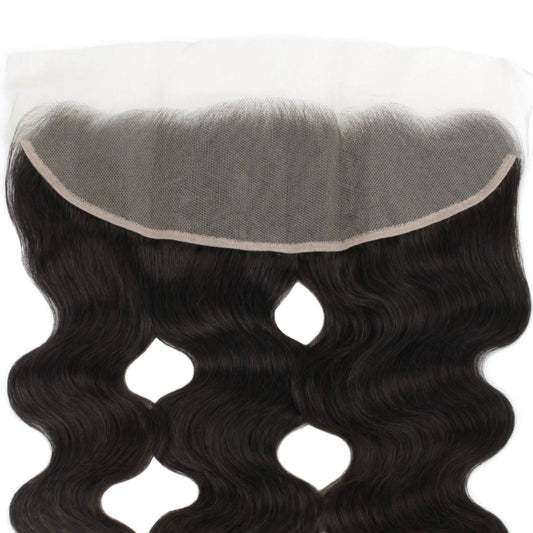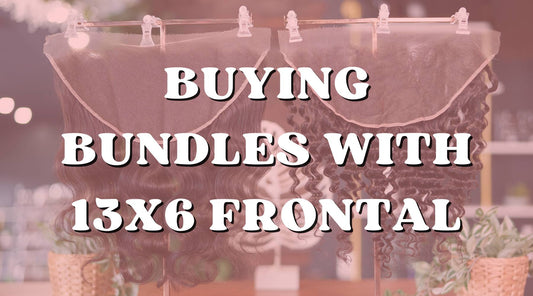1260 Memorial Drive
Atlanta, Georgia 30316
404-458-1330
The Frontal Bible: Everything You Need to Know about Frontals!
Mikey MoranIt seems that no matter the season, there is ALWAYS a need to utilize a protective style.
In the wintertime, the cold air can be harsh and dry out our hair. In the summertime, the heat can cause us to sweat.
No one wants to spend the entire time sweating out their edges!
Certainly not I, and I’m sure you don’t either. During these trying times, we want to slay our appearance from top to bottom.
I know that I’ve had some issues with my natural hair during the seasons considering that I have 4c texture.
I’ve tried ALL the protective styles, and one that I particularly enjoyed and want to try again sometime is a lace front wig. When I had that style, I was catching stares and snatching edges, and I loved every minute of it!
If you’re someone that hasn’t tried a frontal before, you’ve come to the right place. With any hairstyle, you decide to take on, its essential to do the proper research.
Private Label Extensions are proud to present the “Frontal Bible" your guide on EVERYTHING lace frontal related.
By the end of this, you’ll know everything you need to know about frontals from what they are, how they can influence your natural hair, what proper methods of installation to use, how to achieve the perfect style with them, and more!🤩

What Is a Frontal?! Why a Frontal?!
For everyone wondering what a frontal is, let’s start with the fact that it’s either a single piece or a wig.
It’s not like any wig or part, however, considering that it goes from ear to ear, so that the hair can be pulled back as if it were your natural hair.
Typically, people use lace frontals when they desire to create a new hairline that goes back about 2 inches.
Frontals are also extremely popular with individuals that suffer from thinning edges, alopecia, or lingering baldness.
They are also gaining traction within the hair community since they appear to be the most natural-looking styles available.
Frontals are comfortable to install and wear. They also allow you to try an entirely different look, and color without actually damaging your hair.
Also, with frontals, you can protect your edges that you would typically leave out in sew-ins or human hair extensions. Frontals are outstandingly versatile meaning that just about ANY style, with the right hair, can be created.
Since frontals allow you to wear a hairstyle that includes ponytails if you don't have ponytails extensions, you won’t always have your hair in your face, or awkwardly put it into a low ponytail.
If you get a really good frontal wig, then you can even achieve some braid styles such as boxer braids! Frontals can be expensive, but keep in mind that you’re getting more worth for your buck.
Frontals use less hair than a closure extension would so you can buy fewer hair bundles to create a wig.

Frontal Vs. Closure
Before we get into the ways that closures and frontals are different, let’s discuss how they are similar.
Closures and frontals are made with either lace or silk, or a mixture of both. Both closures and frontals will mimic your scalp when styled correctly.
HD Lace Closures like the 2x6 Closure will replicate your scalp more accurately if ever viewed up close. Lace based frontal and closures are usually preferred considering that they lay much flatter against the scalp.
Typically, lace will need to be adjusted to mimic the scalp color more. The noticeable difference between closures and frontals is the size.
Since frontals run from temple to temple and cover the entire hairline, they are fuller in size.
Closures usually only include a horseshoe size portion at the top or front of the installation.
Another significant difference is that closures are always meant to be sewn into place, and have less versatility due to this. Frontals are intended to be bonded into place.
This entails that they look as close to your natural hair as possible and because of this, they have the most versatility out of the two.

Creating and Installing a Frontal
There are plenty of different ways to get the perfect frontal style that you adore. If you want to build a frontal wig from scratch and choose everything from the hair, to the lace, then it’s suggested that you get a trusted wig specialist.
You can also watch YouTube videos and attempt to do it yourself but if this is a significant investment, and your first time, we always suggest asking for assistance from an expert.
If you’re not looking to begin from scratch, then do your research before buying a frontal wig. Make sure that you’re purchasing quality hair before making a purchase and learn how to spot bad hair.
Private Label have tons of fantastic hair to choose from if you’re searching for something right now!
After you’ve found the perfect hair and style you love, its time to select a hairstylist that you know and trust!
The frontal installation process is an essential part of ensuring you get the look that you desire.
Every hairstylist's method will vary but here is a general process to follow when installing a frontal wig.
If you’re purchasing a wig from an online store, and not in person, make sure you inspect the hair before installing.
Doing this will prevent you from using hair that isn’t suitable for the style you’re attempting to achieve.
After you’ve examined your hair, its time to secure your natural hair. You can braid your hair down to create a flat surface, or if you have short hair, you can simply wrap your hair.
It’s important to secure all your hair before applying any adhesive or glue so that you don’t damage your hair.

Frontal Adhesives
Using the right adhesive is an essential part of this process as well. There are specific glues created for securing lace fronts, but not all of them may be compatible with your skin.
We recommend our Safe Lace Glue.
Always do a patch test before applying the adhesive to ensure that you’re not allergic. If you’re using a non-glue adhesive, it’s still necessary to test it out on your skin.
Let's say you plan to swim or be involved with water, then you’ll need a waterproof adhesive.
If you’re worried about putting glue or adhesive on your skin, ask your hairstylist about using a Skin Protector.
And you can use a Safe Lace Glue Remover as well.

Frontal Wigs!
After you’ve settled on glue or non-glue, it’s time to let your hairstylist work their magic and sew down your wig!
Typically frontal wigs only include the front portion of your head, but there is also a “360 frontal.”
A 360 frontal goes around the perimeter of your head like a full lace wig, rather than from ear to ear only.
This frontal does include more versatile styles but can also add more tape, and glue. Keep in mind that it is possible to achieve the look without using any glue or adhesives.
However, this method can only be obtained with an expert stylist. Finding someone that will install your frontal without any glue, and completely sew your look in, will be costly but it is possible.
But not with our Glueless Wigs collection.
If you’re someone that prefers no glue, or adhesive, this method may be better for you. Another way of installation is an elastic band.
This is a preferred method amongst most considering that it’s the most convenient, and it can still look just as amazing as the other methods.
The elastic band serves as a way to secure your wig without actually having to use any potentially damaging material.
The elastic bands give you the flexibility to take off your wig when you want to, and still protect your natural hair.
Although elastic bands are convenient, they won’t withstand vigorous activities that a secure wig normally would.

Is a Frontal Damaging?
Any hairstyle outside of your natural look can be damaging, especially if you’re adjusting your natural look by a significant amount.
There have been plenty of stories regarding the danger of doing looks that aren’t natural.
If you ask any professional, they should advise you to do your research before choosing a hairstyle different from your natural hair.
If you do decide to get a frontal, be aware of the potential damage that your hair can face.
When using lace glue, understand that your skin can be damaged if you don’t choose the correct paste. Also, depending on the amount of time you’d like to keep your frontal, you should select the right kind of glue.
There’s daily lace glue, which is used for everyday usage until you remove your wig at night.
There’s medium-hold lace glue, which is short-term and can hold for four to seven days.
Then, there’s long-term permanent glue, which will hold for up to eight weeks without needing to be removed.
If you do decide to use glue or adhesive, be sure to keep your skin moisturized so that there’s when you remove the frontal, your skin is already well-hydrated.
Also, if you do choose to use this method, do not do it to frequently so that you don’t permanently damage your hair or your skin. A frontal can protect your natural hair if done correctly.
It’s a great style that can look like your natural hair while you grow and protect yours!

Frontal Maintenance
So if you’ve decided that you’re going to move forward with a frontal, there’s some need to know advice regarding how to maintain your look.
When getting a frontal, it’s important to be gentle with your frontal. Don’t comb, brush or tamper with your frontal too much. Since the frontal serves as a net, it’s easy to puncture it, and it’s also easy for it to rip.
Yes, frontals are versatile, but they aren’t extremely durable, and the required maintenance is much higher than other protective styles.
Keep in mind that if you sweat a lot, your frontal won’t stay on if it’s installed with glue or adhesive.
Frontals that use adhesive, or glue that isn’t waterproof are not for individuals that sweat a lot.
If you’re looking to go on vacation or be in the water, you can enjoy yourself but only to a certain extent. You can swim, but not excessively.
Try not to drench your hair all the time, and you should be fine. Your frontal will stay in place.
When drying your hair after getting it wet, you can’t do the regular blow-drying method that you would with your normal hair.
Since it is essential to be gentle, you’ll need to ensure that you keep your frontal in place as you dry it.
Wear a scarf to protect the edges of your frontal, and slowly, and gently brush and detangle your hair.
The great thing about frontals is that they can be reused. You’ll just have to retouch them a few times.
Overall, frontal installations should last 2-3 weeks, even up to 8 weeks depending on how you install it.

Frontal Bible Recap!
Remember that a frontal and closure aren’t the same thing.
There are plenty of different methods of installation when it comes to a frontal. Do your research when it comes to getting a new hairstyle, and make sure that you’re not doing something that could damage your skin, hair, or scalp.
Study all the possible ways to install your frontal! If you’re going to use glue, be aware of the type of glue, and test it out on your skin.
When you’re using adhesive, be sure that you won’t react poorly to it.
If you’re looking for a convenient way to wear your frontal, get an elastic band since you’ll be able to remove it every night if need be.
Under all circumstances, consult with a hairstylist, even if you decide to do your frontal by yourself.
If you’re an athletic person, be aware of the type of frontal you’ll need to maintain your athleticism.
And know the best hair extensions for gym-goers.
Understand the maintenance required to upkeep your hairstyle. Hopefully, this frontal bible that we curated just for you helps you get the best frontal of life!😘

















2 comments
Great article! I’m curious, what are the key differences between a 360 frontal and a standard lace frontal?
Fantastic guide! This post is packed with valuable information on frontals, perfect for anyone new to the style or looking to enhance their technique. Thanks for sharing these insights and tips!